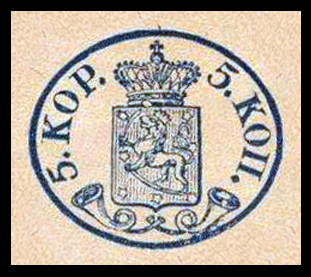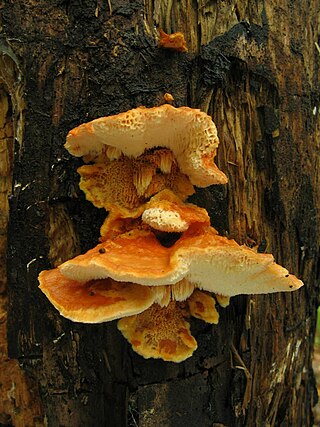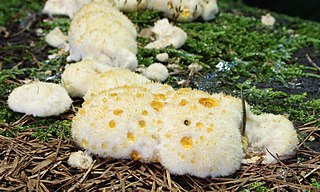
Joulupukki is a Finnish Christmas figure. The name joulupukki literally means 'Christmas goat' or 'Yule goat' in Finnish; the word pukki comes from the Germanic root bock, a cognate of English "buck", meaning 'billy-goat'. An old Nordic folk tradition, the figure is now often conflated with Santa Claus.
Heikki Nousiainen is a Finnish film and television actor. Nousiainen made his acting debut in the television movie Henrik ja Perinlla in 1967. He entered film in 1971, as both a director and an actor in Saatanan radikaalit and has made over 40 Finnish film and TV appearances to date. He has worked with Finnish director Timo Koivusalo on a number of films such as Sibelius in 2003 and Kaksipäisen kotkan varjossa (2005), as well as in other Finnish movies and TV series. In 2006 he starred in 3 different films. Nousiainen is also known as playing President Urho Kekkonen in TV series Vallan miehet (1986), Presidentit (2006) and Piru ja peijooni (2008).

Finland has produced postage stamps for use since 1856.

Postia tephroleuca, also known as greyling bracket, is a species of fungus in the family Fomitopsidaceae infecting broad-leaved trees, typically beech and plane.

The Fomitopsidaceae are a family of fungi in the order Polyporales. Most species are parasitic on woody plants, and tend to cause brown rots. The name comes from Fomitopsis + -aceae.

Postia is a genus of brown rot fungi in the family Fomitopsidaceae.
Gilbertsonia is a fungal genus in the family Fomitopsidaceae. This is a monotypic genus, containing the single brown rot species Gilbertsonia angulipora, found in the United States. Gilbertsonia is characterized by a dimitic hyphal system with clamped generative and well-developed binding hyphae. The generic name honors mycologist Robert Lee Gilbertson.
Rhanteriopsis is a genus of Middle Eastern plants in the tribe Inuleae within the family Asteraceae.

The 33rd annual Cairo International Film Festival was held from November 10 to November 20, 2009. Indian director Adoor Gopalakrishnan was the president of the jury.

George Edward Post (1838–1909) was an American surgeon, academic and botanist.

Hallomenus axillaris is a species of fungus beetle in the family Tetratomidae. It was described by German entomologist Johann Karl Wilhelm Illiger in 1807. It is found in Europe. In the Moscow region, it has been recorded growing in the fruitbodies of the fungi Hapalopilus rutilans, Laetiporus sulphureus, Polyporus squamosus, Postia fragilis, Pycnoporellus fulgens, Tyromyces chioneus, and Fomes fomentarius.

In Finland, Kotiranta and Niemelä introduced a widely used method for comparing the conservation values of different forest areas, based on the observation that certain wood-rotting fungi are very sensitive to the impact of human activities on forest ecosystems. Such species are slow to return to areas from where they have disappeared, so their presence is evidence of a long continuity in forest ecosystems.
Ceriporiopsis pseudoplacenta is a species of poroid crust fungus in the family Polyporaceae. It was described as a new species by mycologists Josef Vlasák and Leif Ryvarden in 2012. The type specimen was collected in Bogachiel State Park, Washington, where it was found growing on a coniferous log. It is named for its superficial similarity to Postia placenta.
Postia cylindrica is a species of poroid fungus in the family Fomitopsidaceae. Found in Southern China, it was described as a new species in 2017 by Hai-Sheng Yuan. The type collection was found growing on a dead pine tree in Jiangxi. The fungus is characterized macroscopically by crust-like to effused-reflexed fruit bodies with a cream to buff coloured cap surface and a reddish-brown margin that curves inward. There are gloeoplerous (oily) hyphal cells in the cuticular layer, and an absence of cystidia in the hymenium. The fungus produces smooth, cylindrical, thin-walled spores measuring 4.7–5.2 by 1.3–1.5 μm.
Postia duplicata is a species of poroid fungus in the family Fomitopsidaceae that was described as a new species in 2014. It is found in Yunnan and Zhejiang provinces of China, where it causes a brown rot on angiosperm wood. The fungus is named (duplicata) for its characteristic two-layered context, a feature that distinguishes it from other Postia species. The spores made by this fungus are cylindrical, hyaline, smooth, and typically measure 3.8–5.8 by 1.8–2.5 µm.
Postia amylocystis is a species of poroid fungus in the family Fomitopsidaceae. Found In China, the fungus was described as new to science in 1994 by mycologists Yu-Cheng Dai and Pertti Renvall. The original type collections were made in the Changbai Mountain Range, where the fungus was found growing on a decayed trunk of Manchurian lime. Characteristics that distinguish P. amylocystis from other Postia species include thick-walled cystidia in the hymenium, and narrow, sausage-shaped (allantoid) spores. The specific epithet amylocystis refers to the amyloid cystidia, and hints at a possible phylogenetic relationship to Amylocystis lapponica.

Postia ptychogaster, commonly known as the powderpuff bracket, is a species of fungus in the family Fomitopsidaceae. The fungus, which is found in Europe, resembles a powdery cushion that fruits on stumps and logs of rotting conifer wood. In this stage of its life cycle, the "cushion" is a mass of chlamydospores.

Postia lateritia is a species of fungus belonging to the family Fomitopsidaceae.
Calcipostia is a monotypic genus of fungi belonging to the family Fomitopsidaceae. The only species is Calcipostia guttulata.
Postia leucomallella is a species of fungus belonging to the family Fomitopsidaceae.











